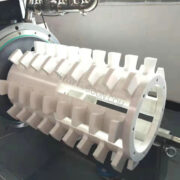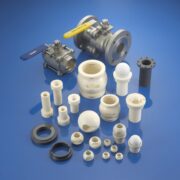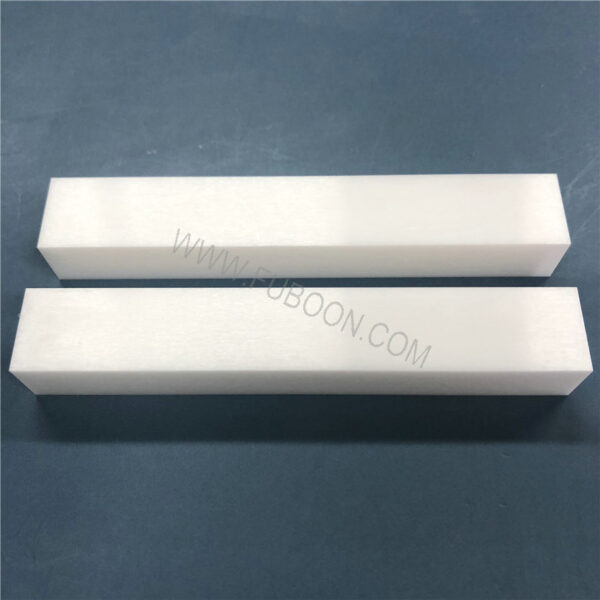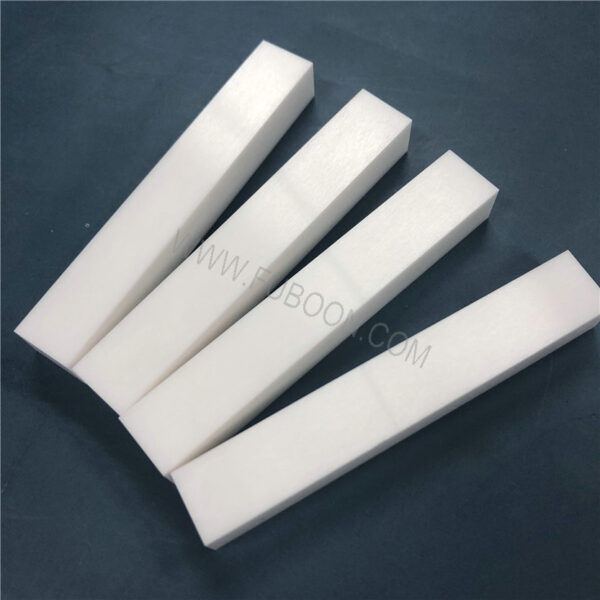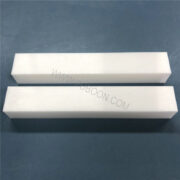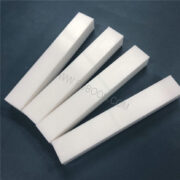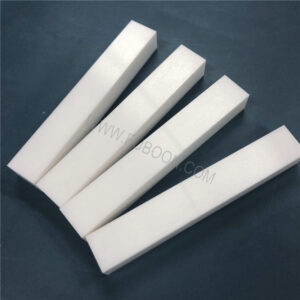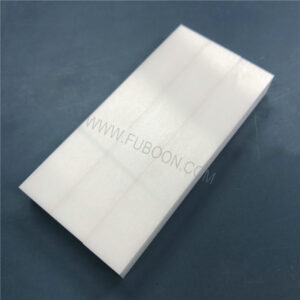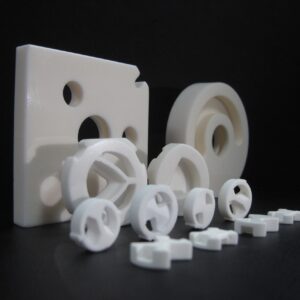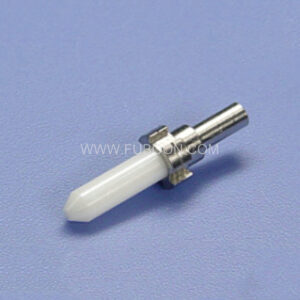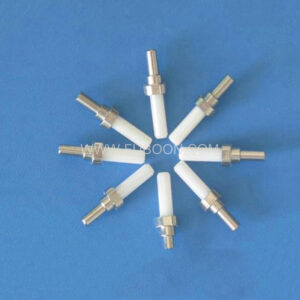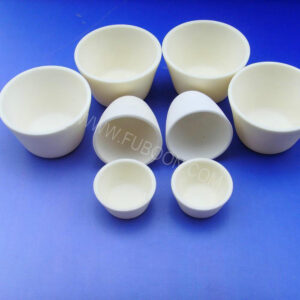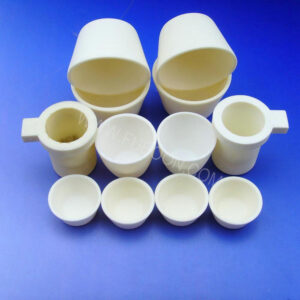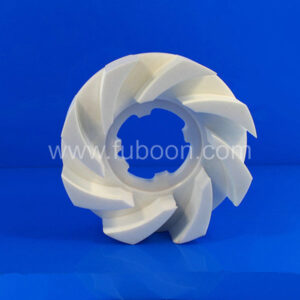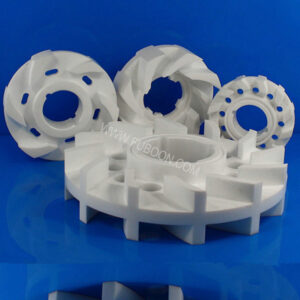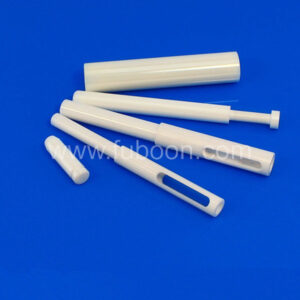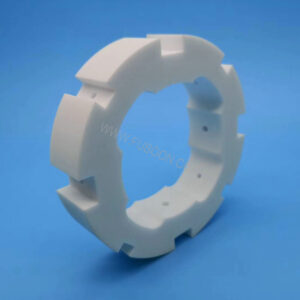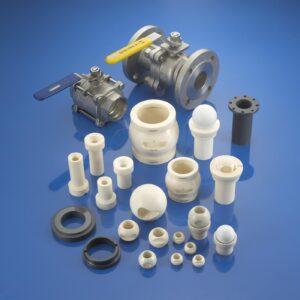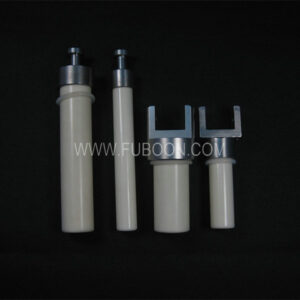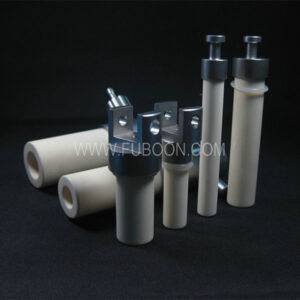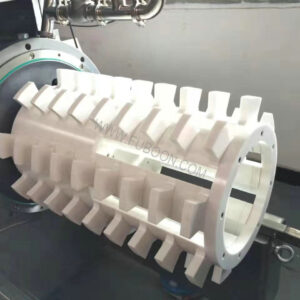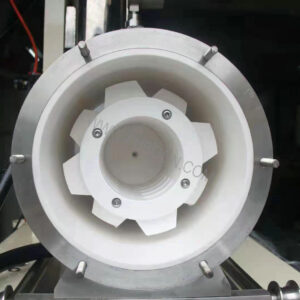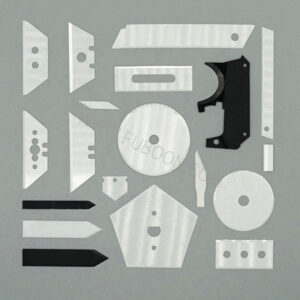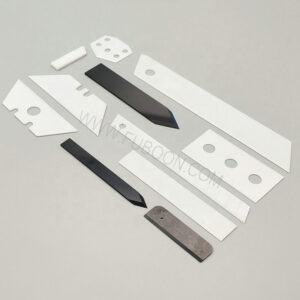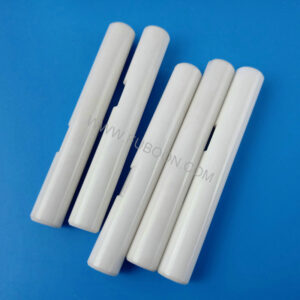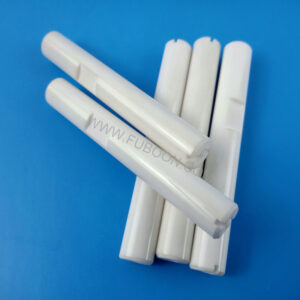zirconia ceramic rectangular block for correct tool
Material Advantage
Zirconia ceramic linear guide,zirconia ceramic rectangular block for correct tool:
– High strength
– High fracture toughness
– High hardness
– Wear resistance
– Electrical insulation
– Low thermal conductivity
– Corrosion resistance in acids and alkalis
– Modulus of elasticity similar to steel
– Coefficient of thermal expansion similar to iron
Material introduction:
Zirconia ceramic linear guide:
Zirconia has the highest strength and toughness at room temperature of all the advanced ceramic materials. The fine grain size allows for extremely smooth surfaces and sharp edges.
Applications include scissors, knifes, slitters, pump shafts, metal-forming tools, fixtures, tweezers, wire drawing rings, bearing sleeves and valves.
zirconia ceramic rectangular block for correct tool
Product Description
Zirconia Ceramics (ZrO2) especially Yttria Stabilized Zirconia Ceramics (Y-PSZ) is a commonly used technical ceramic material. It has relatively high fracture strength among all ceramic materials, with the addition of high hardness and low friction coefficient, it is usually used for structural ceramic components. Its thermal expansion coefficient is similar to steel, so it can be jointed to steel parts. Besides, it has excellent corrosion resistance and low thermal conductivity.
Typical applications include ceramic valve components, ceramic grinding&milling media, ceramic knife blades for various using, mechanical liners or bearing balls etc.
Datasheet of Technical ceramics
| Property | Units | Material |
99.5%
alumina | 99%
alumina | 95%
alumina | ZrO2
(Y-TZP) | ZrO2
(TTZ) |
| Density | g/cm3 | ≥3.85 | ≥3.80 | ≥3.60 | ≥5.95 | ≥5.72 |
| Water absorption | % | 0 | 0 | 0 | 0 | 0 |
| Hardness | HV | 1700 | 1700 | 1500 | 1300 | 900 |
| Flexural strength | Mpa | ≥379 | ≥338 | ≥320 | ≥1200 | ≥1200 |
| Compressive strength | Mpa | ≥2240 | ≥2240 | ≥2000 | ≥1990 | 1750 |
| Fracture toughness | Mpa m1/2 | 4-5 | 4-5 | 3-4 | 6.5-8 | 11 |
Max. service
temperature | ºC | 1675 | 1600 | 1450 | 1000 |
| CTE | 1×10 -6 /ºC | 6.5~8.0 | 6.2~8.0 | 5.0~8.0 | 8.0~9.5 | 10.2 |
| Thermal shock | T(ºC) | ≥250 | ≥200 | ≥220 | ≥300 | 350 |
| Thermal conductivity(25ºC) | W/m.k | 30 | 29 | 24 | 3 | 3 |
| Volume resistivity | ohm.cm |
| 25ºC | >1 x 10 14 | >1 x 10 14 | >1 x 10 14 | >1 x 10 11 | >1 x 10 11 |
| 300ºC | 1 x 10 12 | 8 x 10 11 | 10 12 -10 13 | 1 x 10 10 | 1 x 10 10 |
| 500ºC | 5 x 10 10 | 2 x 10 9 | 1 x 10 9 | 1 x 10 6 | 1 x 10 6 |
| Insulation strength | KV/mm | 19 | 18 | 18 | 17 | 20 |
| Dielectric constant(1Mhz) | (E) | 9.7 | 9.5 | 9.5 | 29 | 28 |
Zirconium oxide occurs as monoclinic, tetragonal and cubic crystal
forms. Densely sintered parts can be manufactured as cubic
and/or tetragonal crystal forms. In order to stabilise these crystal
structures, stabilisers such as magnesium oxide (MgO), calcium
oxide (CaO) or yttrium oxide (Y2O3) need to be added to the ZrO2.
Other stabilisers sometimes used are cerium oxide (CeO2),
scandium oxide (Sc2O3) or ytterbium oxide (Yb2O3).
Zirconium oxide occurs as monoclinic, tetragonal and cubic crystal forms. Densely sintered parts can be manufactured as cubic
and/or tetragonal crystal forms. In order to stabilise these crystal structures, stabilisers such as magnesium oxide (MgO), calcium
oxide (CaO) or yttrium oxide (Y2O3) need to be added to the ZrO2.
Other stabilisers sometimes used are cerium oxide (CeO2),scandium oxide (Sc2O3) or ytterbium oxide (Yb2O3).
zirconia ceramic rectangular block for correct tool
Unlike other ceramic materials, zirconia is a material with very high resistance to crack propagation. Zirconium oxide ceramics also have very high thermal expansion and are therefore often the material of choice for joining ceramic and steel.
high fracture toughness
thermal expansion similar to cast iron
extremely high bending strength and tensile strength
high resistance to wear and to corrosion
low thermal conductivity

